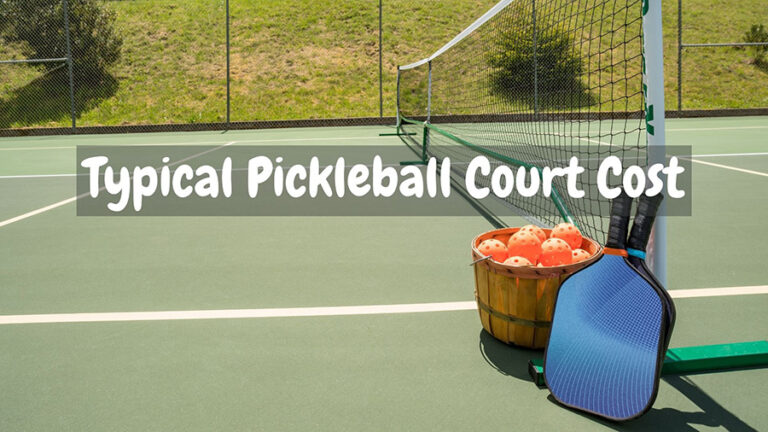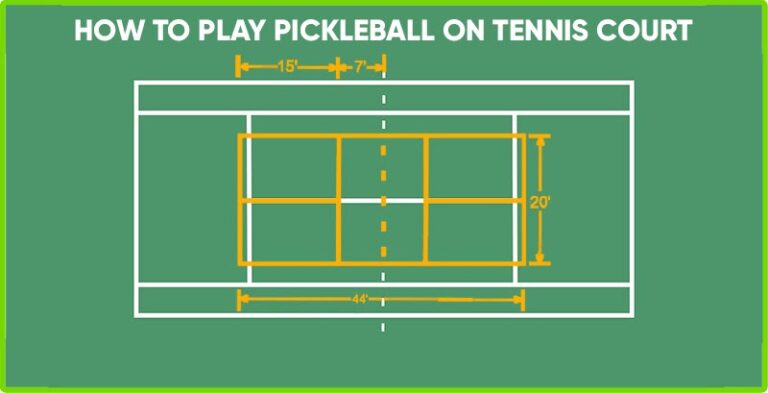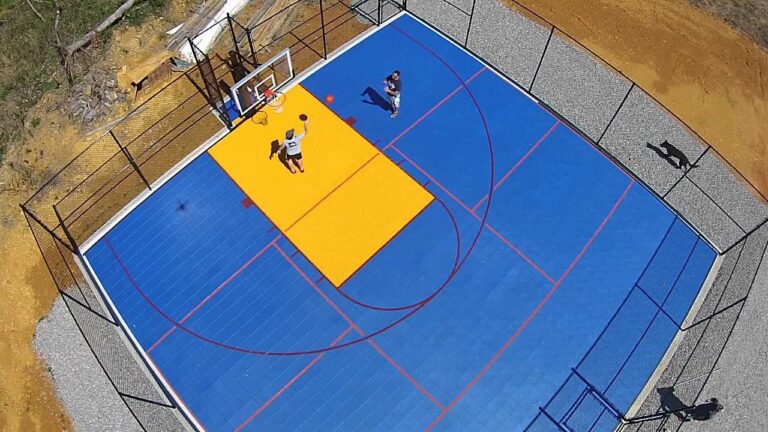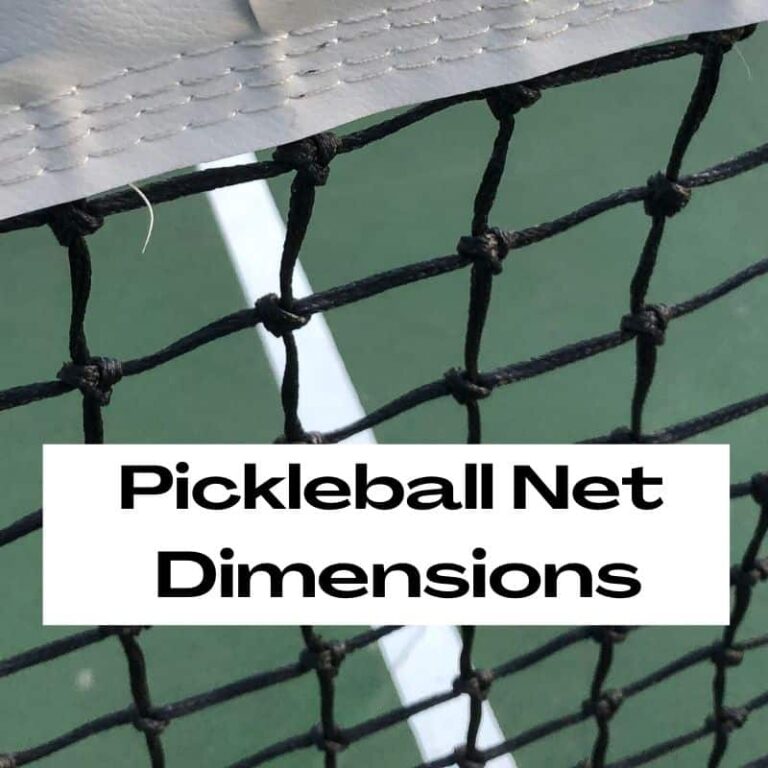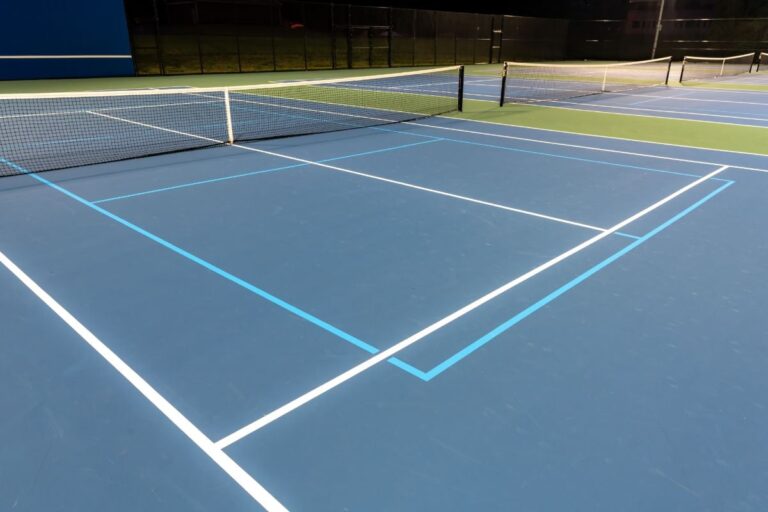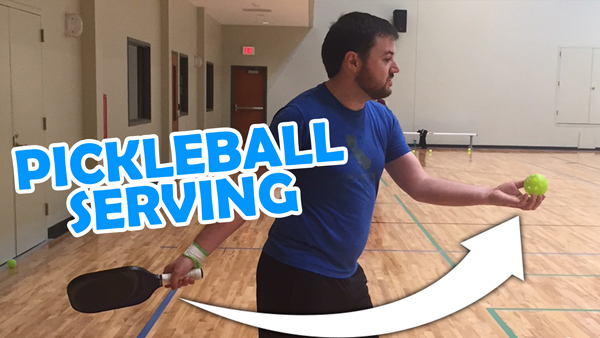How Much Do Pro Pickleball Players Make? Inside the Earnings Game
How Much Do Pro Pickleball Players Make? A Guide to Earnings on the Court
Pro pickleball players can earn money through tournament prizes, sponsorships, appearances, and coaching. Top players like Ben Johns and Anna Leigh Waters can make six figures annually, but most pros earn far less. The median annual income for pro pickleball players is around $15,000, with many reporting earnings under $5,000 from pickleball alone. While the sport’s growth presents exciting opportunities, most pro players must pursue multiple income streams and carefully manage expenses to make a living in pickleball.
Key Takeaways
- Pro pickleball players can earn money through a variety of channels, including tournament prize money, sponsorships, appearances, leagues, social media, and coaching.
- The top players in the sport can earn six figures or more per year, but the median annual income for pro players is around $15,000.
- Sponsorships and endorsements are a major source of income for many pro players, with top stars commanding deals worth hundreds of thousands or even millions of dollars.
- Appearance fees and exhibition matches can also be lucrative for top players, with some earning thousands of dollars for a single event.
- Social media has become an increasingly important tool for pro players looking to build their brand and monetize their influence.
- Coaching and clinics are another way for pro players to earn income and share their knowledge with aspiring players.
- While the earning potential for top pro pickleball players is significant, the reality is that most pros are not getting rich off pickleball alone and must carefully manage their expenses and pursue multiple income streams to make a living in the sport.
At Pickleball Toolbox, we’re all about providing you with the inside scoop on all things pickleball. So buckle up, because we’re about to take a deep dive into the financial side of the pro pickleball world. From tournament purses to sponsorship deals, we’ll explore the various ways pro players can earn a living doing what they love.
But before we get into the nitty-gritty of pro pickleball earnings, let’s first take a step back and examine the factors that can impact a player’s bottom line. After all, not all pros are raking in the big bucks—at least not yet.
Factors Affecting Pro Pickleball Player Earnings
So what separates the highest earners from the rest of the pack? Here are some of the key factors that can influence a pro pickleball player’s income:
- Tournament prize money
- Sponsorships and endorsements
- Appearance fees and exhibitions
- Leagues and team contracts
- Social media presence and influence
- Coaching and clinics
Of course, these are just some of the main factors at play. A player’s earnings potential can also be influenced by their skill level, marketability, location, and a host of other variables. But in general, the more successful and visible a player is, the more opportunities they’ll have to monetize their talent.
Now that we have a better understanding of the earning landscape, let’s break down some of these income streams in more detail.
Breaking Down Pro Pickleball Earnings
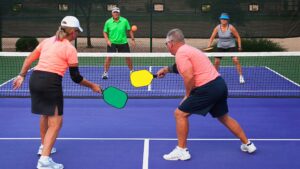
Prize Money
For most professional pickleball players, tournament prize money is the primary source of income. But just how much are we talking about? Well, it depends on the tournament.
At the highest level, you have the major tournaments like the USA Pickleball National Championships and the US Open Pickleball Championships, which offer some of the biggest prize purses in the sport.
| Tournament | Total Prize Pool (2022) | Singles Winner Payout |
|---|---|---|
| US Open | $150,000 | $7,500 |
| USA Nationals | $90,000 | $5,000 |
| Tournament of Champions | $50,000 | $3,500 |
But not all tournaments are created equal. Below the majors, you have smaller tournaments like those on the APP Tour, which typically offer more modest prize pools in the $10,000-$25,000 range. And then you have regional and local tournaments, where the prize money may be even less.
It’s also important to note that prize money is often distributed based on a player’s finish and the size of the field. In doubles events, the prize money is split between the two players on a winning team. So while the top finishers in a major tournament might walk away with a nice payday, those who exit early may barely cover their expenses.
To put it in perspective, let’s look at some real-world examples:
- In 2022, Anna Leigh Waters, one of the top-ranked women’s players in the world, earned over $35,000 in prize money from her tournament finishes alone.
- On the men’s side, players like Ben Johns and JW Johnson routinely finish near the top of the money list, with earnings in the $20,000-$30,000 range.
- According to an analysis by The Dink Pickleball, the median annual earnings for pro pickleball players in 2022 was around $5,000—hardly enough to make a living on its own.
So while prize money can be a significant source of income for the top players, it’s not necessarily a reliable or lucrative option for everyone. That’s where some of the other earning opportunities come into play.
Sponsorships and Endorsements
For many pro pickleball players, sponsorships and endorsements are the bread and butter of their earnings. By partnering with pickleball brands, equipment manufacturers, and other companies, players can tap into a more stable and potentially lucrative source of income.
The most common types of pickleball sponsorships include:
- Paddle and equipment sponsors
- Apparel and shoe deals
- Supplement and nutrition sponsorships
- Other endorsements (financial services, automotive, lifestyle brands, etc.)
The value of these sponsorships can vary widely depending on factors like the player’s ranking, social media presence, and overall brand appeal. Top players with large followings and a proven track record of success can command significant sums for their endorsements, sometimes into the six figures or more.
For example, in 2022 it was reported that Ben Johns, widely considered the best men’s player in the world, had signed a multi-year sponsorship deal with Franklin Sports that was rumored to be worth over $1 million. While the exact terms of the deal were not disclosed, it’s clear that Johns’ status as the face of the sport has made him an attractive partner for brands looking to make a splash in the pickleball market.
Of course, not every player can be a Ben Johns. For most pros, sponsorships are more modest affairs, often involving free or discounted gear, small cash payments, or performance-based incentives. But even these smaller deals can add up over time and provide a valuable supplement to a player’s tournament earnings.
The key for players is to find sponsors that align with their personal brand and values, and to be proactive in seeking out and negotiating deals. In the words of pro player Tyson McGuffin, “You have to be your own advocate and put yourself out there. No one is going to do it for you.”
Appearance Fees and Exhibitions
Another way for pro pickleball players to earn income is by making paid appearances at clubs, resorts, tournaments, or other special events. These appearances can take many forms, such as:
- Exhibition matches
- Skills demonstrations
- Meet-and-greets
- Autograph signings
Appearance fees can vary widely depending on the player’s profile and the nature of the event. A top player like Simone Jardim or Lucy Kovalova might command several thousand dollars for a one-off appearance, while a lesser-known pro might earn a few hundred bucks for a clinic or exhibition.
One of the most lucrative appearance opportunities for pros is the exhibition match. These are often staged as part of a larger event, such as a tournament or festival, and feature high-profile matchups between top players. The players are typically paid a flat fee for their participation, which can range from a few thousand to tens of thousands of dollars depending on the event and the players involved.
For example, in 2022 the Pickle Shack in Sarasota, Florida hosted an exhibition match featuring Ben Johns and Collin Johns taking on JW Johnson and Dylan Frazier. The event drew a huge crowd and garnered significant media attention, with the players reportedly earning substantial appearance fees for their participation.
But paid appearances aren’t just for the top pros. Many clubs and resorts will bring in lower-ranked players or local pros to host clinics, camps, or exhibitions as a way to generate buzz and attract new players to the sport. These gigs may not pay as much as a major exhibition, but they can still provide a nice boost to a player’s income.
The key for players is to be proactive in seeking out these opportunities and to leverage their personal brand and network to land gigs. Many pros will work with a manager or agent to help them secure appearances and negotiate fees, while others prefer to handle things on their own.
As pro player Michelle Esquivel puts it, “It’s all about hustle. You have to be willing to put yourself out there and make connections. The more people you know and the more value you can provide, the more opportunities will come your way.”
Leagues and Team Contracts
As the pro pickleball scene continues to evolve, we’re starting to see the emergence of organized leagues and team-based competitions that offer players the opportunity to earn a more stable income.
One of the most notable examples is Major League Pickleball (MLP), a team-based league that launched in 2021. The league features:
- 8 teams
- 4 players per team (mix of men and women)
- Series of tournaments throughout the year
Players in MLP are reportedly paid a base salary for their participation, with the opportunity to earn additional bonuses based on their team’s performance. While the exact figures have not been made public, some estimates put the average player salary at around $5,000 per season, with top players earning significantly more.
Other team-based competitions have also emerged in recent years, such as:
- Pickleball Doubles League (PDL)
- Association of Pickleball Professionals (APP) Cup
These leagues offer players the chance to compete for prize money and build their personal brand within a team context.
While these team-based leagues are still in their early stages, they represent an exciting new frontier for pro pickleball and a potentially lucrative opportunity for players. As MLP co-founder Steve Kuhn put it, “Our goal is to create a sustainable, professional pickleball league that provides opportunities for the best players in the world to showcase their talents and earn a living doing what they love.”
Social Media and Influence
In today’s digital age, social media has become an increasingly important tool for pro pickleball players looking to build their brand and monetize their influence.
Many top players have large followings on platforms like:
- YouTube
Players use these platforms to share updates on their training, tournaments, and personal lives. These followings can be leveraged to attract sponsors, secure paid partnerships, and generate income through affiliate marketing or merchandise sales.
For example, pro player Irina Tereschenko has over 100,000 followers on Instagram, where she regularly posts pickleball tips, drills, and behind-the-scenes content from her life on the pro tour. She also uses her platform to promote her sponsors, which include paddle manufacturer Selkirk and apparel brand Fila.
Other players, like Tyson McGuffin and Simone Jardim, have built successful YouTube channels where they share instructional content, vlogs, and other pickleball-related videos. These channels not only help them connect with fans and grow their personal brand, but also provide an additional revenue stream through ad revenue and sponsorships.
The key for players is to be authentic, engaging, and consistent in their social media presence. As pro player Catherine Parenteau puts it, “Social media is a great way to connect with fans and showcase your personality beyond just your skills on the court. But it takes time and effort to build a following and create content that resonates with people.”
Of course, social media isn’t just about racking up followers and likes. It’s also a powerful tool for building relationships with potential sponsors and partners. Many brands will look at a player’s social media presence and engagement as a key factor in determining their value as an endorser or influencer.
As such, players who can effectively leverage their social media platforms to create value for themselves and their partners will be well-positioned to capitalize on the growing interest in pickleball and the opportunities it presents.
Coaching and Clinics
In addition to competing and promoting themselves on social media, many pro pickleball players also earn income by offering coaching services and clinics to aspiring players.
Private lessons with a top pro can command rates of $100 or more per hour, while group clinics and camps can bring in thousands of dollars in revenue over the course of a weekend or week-long session.
For example, pro player Dekel Bar offers coaching through his Pickleball Coaching Academy, with rates starting at:
- $120 per hour for private lessons
- $500 per day for group clinics
Other pros, like Simone Jardim and Lucy Kovalova, offer multi-day camps and retreats that can cost upwards of $1,000 per person.
Coaching can be a lucrative source of income for pros, particularly those who have a knack for teaching and a reputation as a top instructor. It also provides a way for players to stay involved in the sport and share their knowledge with the next generation of players.
However, coaching can also be a time-consuming and physically demanding pursuit, particularly for players who are still actively competing on the pro tour. As such, many pros will limit their coaching commitments during the season or offload some of the work to assistant coaches or instructors.
Ultimately, the key for players is to find a balance between competing, coaching, and other pursuits that allows them to maximize their earning potential while still pursuing their passion for the sport.
The Earning Spectrum in Pro Pickleball
So just how much can pro pickleball players expect to earn? The answer, as with most things in life, is “it depends.”
At the top end of the spectrum, you have the elite players who are consistently winning tournaments, landing major sponsorships, and building massive social media followings. These players can easily earn six figures or more per year from prize money, endorsements, and other income streams.
For example, Ben Johns, who is widely considered the best male player in the world, reportedly earned over $250,000 in 2022 from tournament winnings and sponsorships alone. Other top players, like Anna Leigh Waters and Catherine Parenteau, likely earned in the high five to low six figures range.
But for every Ben Johns or Anna Leigh Waters, there are dozens of other pro players who are grinding it out on the tour, often earning far less.
According to a survey conducted by The Dink Pickleball, the median annual income for pro pickleball players in 2022 was:
- Overall: $15,000
- Men: $17,500
- Women: $12,500
Many players reported earnings of less than $5,000 per year from pickleball alone.
Of course, these figures don’t tell the whole story. Many pro players supplement their pickleball income with other pursuits, such as:
- Coaching
- Teaching
- Working in the pickleball industry
And for some players, particularly those who are just starting out or who are still working their way up the rankings, pickleball may be more of a passion project than a primary source of income.
Ultimately, the earning potential for pro pickleball players will depend on a variety of factors, including their skill level, marketability, location, and ability to capitalize on opportunities both on and off the court. But with the sport continuing to grow and attract new players and fans, the future looks bright for those who are able to make a name for themselves in the pro ranks.
Additional Considerations Beyond Base Earnings
While prize money, sponsorships, and other direct income streams are certainly important, they don’t tell the whole story when it comes to the financial realities of life as a pro pickleball player.
Travel Expenses
One of the biggest expenses for pro players is travel. With tournaments and events taking place all over the country (and increasingly, the world), players must be prepared to spend significant amounts of money on:
- Airfare
- Lodging
- Transportation
- Food and incidentals
While some players may be able to offset these costs through sponsorships or other deals, the reality is that travel expenses can quickly eat into a player’s earnings, particularly if they are not consistently finishing near the top of the standings.
As pro player Lea Jansen puts it, “Traveling for pickleball can be expensive, especially if you’re doing it full-time. You have to be smart about how you budget and plan your schedule, because those costs can add up quickly.”
Training and Equipment Costs
In addition to travel expenses, pro pickleball players must also invest in their training and equipment in order to stay competitive at the highest levels of the sport.
This can include things like:
- Coaching fees
- Gym memberships
- High-end paddles, shoes, and gear
While some players may receive free or discounted equipment through sponsorships, others must pay out of pocket for the tools of their trade.
And then there are the more intangible costs of being a pro athlete, such as the physical toll of training and competing at a high level day in and day out. Injuries, burnout, and other setbacks can all have a significant impact on a player’s earning potential and career longevity.
As pro player JW Johnson puts it, “Being a professional athlete is not for the faint of heart. It takes a lot of hard work, dedication, and sacrifice. You have to be willing to push yourself to the limit every single day, both physically and mentally. But for those who love the game and are passionate about competing at the highest level, it’s all worth it in the end.”
Conclusion
So there you have it—a comprehensive look at the earning potential and financial realities of life as a professional pickleball player. While the top players in the sport can certainly earn a good living through tournament winnings, sponsorships, and other income streams, the reality is that most pros are not getting rich off pickleball alone.
But for those who are passionate about the sport and dedicated to honing their craft, the opportunity to compete at the highest level and build a career around pickleball is an exciting and rewarding prospect. As the sport continues to grow and evolve, we can expect to see even more opportunities for players to make a name for themselves and earn a living doing what they

